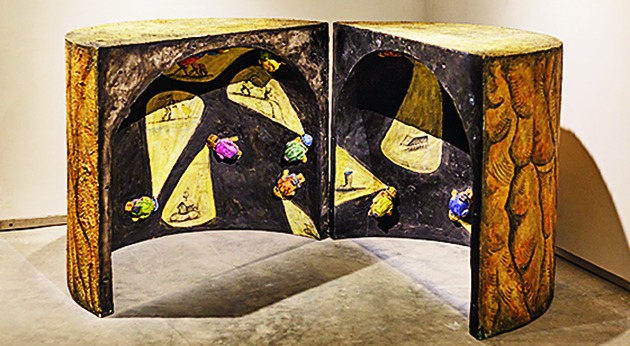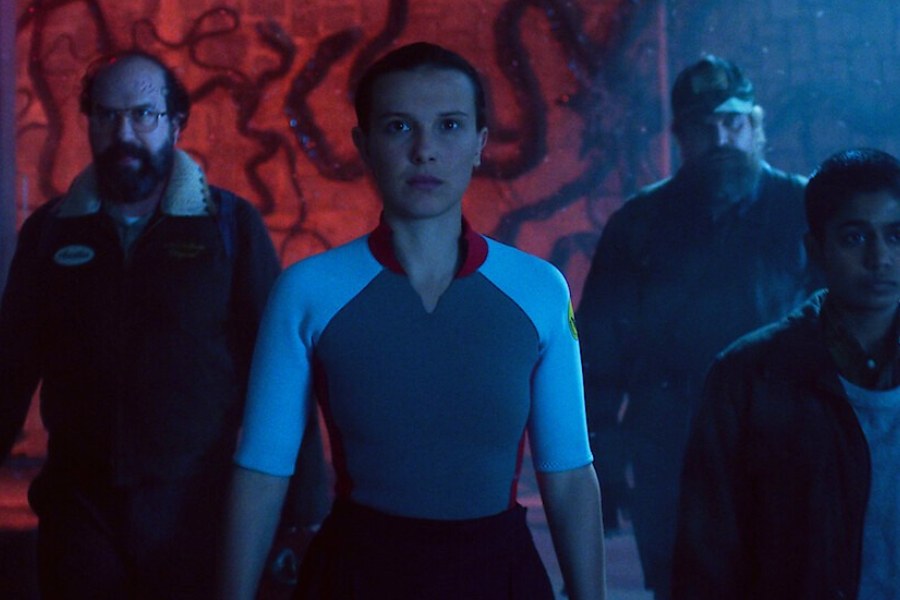
Whether she's deified as goddess and mother or demonized as temptress, it's kaya - her mythopoeic body - that determines patriarchal assumptions about women and, thus, of social norms. From inheritance to marriage to role-playing. In exploring the feminine identity by women artists in its recent show, Ganges Art Gallery was perceptive in entitling it Kaya, emphasizing a fundamental civilizational dichotomy that women themselves, indoctrinated over the ages, had come to accept till recently. Because a woman's identity has always been circumscribed, first of all, by her body. The artists who addressed this with provocative aggression were, first of all, Moutushi Chakraborty and Megha Joshi. In her ink drawings, Chakraborty went back to primitive fertility cults and the grotesque tumescence of mother goddess figurines to exaggerate those features of a woman's body that declare both her sexuality and her state of motherhood. She reinvented with searing irony that object of perverse male dominance, the chastity belt, even turning it into a thorn-lined armour to place the female torso under lock and key and fend off trespassers. Joshi's work with dried gourds and paper pulp was disturbingly evocative of limp, aged, discoloured breasts that could belong as much to Mother Earth matriarchs as to abused survivors, who could, ironically enough, be the same.
Mahjabin I. Majumdar and Rashmee Pal Chouteau investigated the woman's body as a construct of the male gaze. Majumdar insinuated the dilemma of women in traditional, particularly subcontinental, culture. Playing with the idea behind the hijab (or the ghunghat), which prescribes precisely how much a woman may reveal, she suggested it can be manipulated to obscure and assert by turn the woman's identity as an individual. With Chouteau, the feminine mouth turns into a fantasy trip - full, red, succulent - an orifice of mysteries and rich eroticism.
For Manjari Chakravarti and Nandini Chirimar, the axis shifted to the woman's private mythology rooted in the miscellany of life for she hoards old things as much as memories. Chakravarti confessed that she collects memories, thoughts and observations. You can see how, spiced with the wonder of Lewis Carroll's Alice - her protagonist - it's all stirred into a dense, seductive wonderland in mixed media in an ornate period style of book illustration or reinvented into quaint cut-outs, like in pop-up books. And Chirimar, recognizing that one's identity is defined by the fragments of one's experiences, reads trivial objects as loaded signs that offer a frame of reference not only to be lived by but also mined for art.










